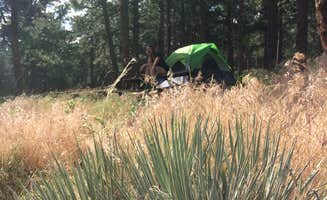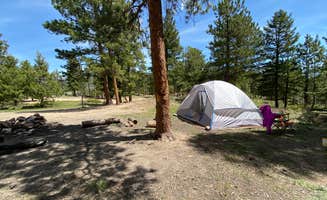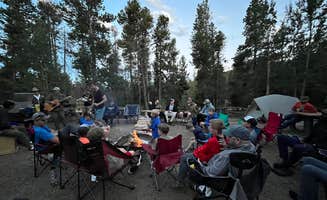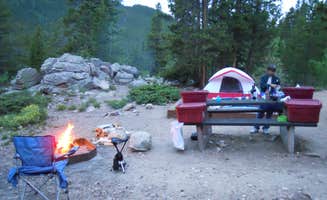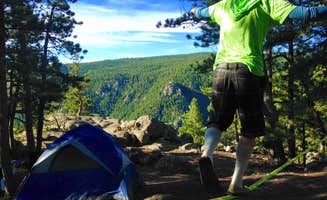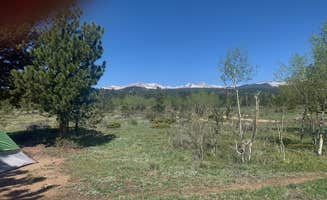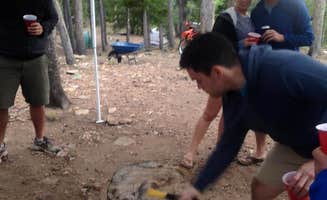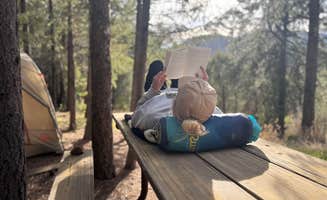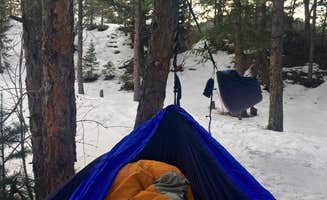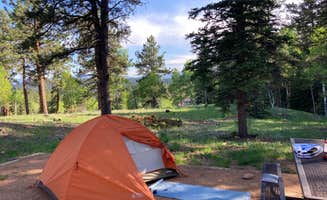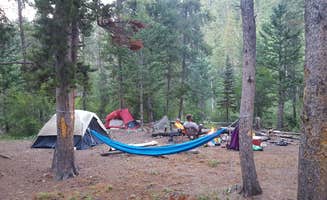Dispersed camping areas near Twin Lakes, Colorado dot the region, offering a mix of rugged and accessible sites. Elevations range from 9,200 to 10,500 feet, creating cooler camping conditions with temperatures that can drop below 40°F even in summer nights. Forest Service roads provide access to most primitive sites, with seasonal closures typically occurring from October through May depending on snowfall patterns.
What to do
Paddleboarding and kayaking: At Winiger Ridge at Gross Reservoir, water activities are a major draw. "It is an awesome SUPing, kayaking, or canoeing option close to Denver and Boulder," reports Karl G. The reservoir offers numerous inlets to explore, though note that "you can only launch your boat at the boat launch on the southeast side of the reservoir that is monitored by a ranger."
Hiking nearby trails: Several campsites offer hiking opportunities within walking distance. At Sawmill Hiker Campground, "the Forsythe Canyon Trail (moderate difficulty, one tricky section 3/4 of the way) which leaves from the parking lot area" provides a scenic option. Jessica K. notes this "1 mile loop that ends at the north west side of the lake" is accessible for beginners.
Wildlife viewing: Early mornings offer the best wildlife sightings. "Moose visitors at dawn and evening" are common at Gordon Gulch, according to Amanda V. At Allenspark Dispersed Camping, campers report more diverse sightings: "I also saw elk nearby," mentions Eliza S., while others have encountered bears—a reminder to practice proper food storage.
What campers like
Solitude at higher elevations: N Boulder Creek Dispersed Camping receives high marks for privacy. "Very seclude, easy to access. I saw about 10 different pull in sites, maybe more," writes Kristen M. Another camper notes it's "not hard to get to" despite its remote feel, with "nice views, plenty of space."
Sound of running water: Many tent campsites near Twin Lakes feature creekside locations. At Allenspark Dispersed Camping, Ben D. found "the pull offs are great and most of them have fire rings" along a creek. Another camper appreciated how "right next to a creek, nice to have a water feature."
Proximity to small towns: Campers value access to nearby communities. "It's only about 10 minutes from Nederland and 45 minutes from boulder," writes a visitor to N Boulder Creek. Similarly, Gordon Gulch campers note that "Nederland is close enough to run into town if needed," making supply runs convenient.
What you should know
Road conditions vary significantly: Access to Dream Canyon Campsites requires careful vehicle assessment. "The trailhead parking lot has one giant rut that you must be careful to navigate around. 2 Wheel Dr. and low clearance vehicles can do it, but should be extremely careful," warns Raymond H.
Fire restrictions: Regulations change seasonally and by location. While many dispersed sites allow fires in established rings, some areas implement complete bans. Campers at Aspen Meadows Campground note the "metal fire pit (good for stage 1 fire ban)" allowed them to have fires when other areas couldn't.
Site competition on weekends: Arrive early, especially at sites near Boulder. At Gordon Gulch, one camper advises, "I'd suggest getting their early to get a good spot!" Campsites fill quickly, particularly "given that this is so close to boulder, a ton of people come here."
Noise factors: Construction and traffic create unexpected noise at some sites. At Winiger Ridge, melissa M. reports: "a Mine or Quarry on the other side of the 'lake'... worked non stop for 24 hours, which means non stop noise."
Tips for camping with families
Choose established sites with amenities: Aspen Meadows Campground offers features that make family camping easier. One parent notes it's "perfect quick get-a-way" and "the privacy and natural beauty all easily accessible for a 1 night trip for a family breaking in some unruly toddlers to the camping experience."
Look for beginner-friendly backpacking: Sawmill Hiker Campground provides an introductory backcountry experience. "This was an excellent 'beginner' foray into backpacking!" writes Jessica K., who took a one-year-old. "It is a 1 mile, easy hike. The first 1/3 of a mile is dirt, the remainder is gravel."
Verify potable water sources: Most dispersed camping areas lack water. At Bear Creek Lake Campground, campers appreciate that despite primitive conditions, there are "water fill stations" available, which are especially important when camping with children.
Tips from RVers
Assess clearance requirements: RV camping near Twin Lakes requires careful route planning. At Winiger Ridge, Graham S. cautions: "Camp sites are nice, but except for a few (~5) the rest require a serious climb (drive) up a gnarly hill with deep ruts." He adds, "I wouldn't try this with a camper/RV, or anything that doesn't have high clearance and power."
Lookout for dedicated RV sites: Some areas specifically accommodate larger vehicles. At Hidden Wilderness Roadside Camp, campsites provide views but require caution. The road is "very rocky and bumpy and requires 4WD," so RVers should scout first or check recent reviews for road conditions.
Consider seasonal timing: Spring camping presents unique challenges for RVs. Melting snow can create mud and unstable terrain, while early summer brings wildflower benefits. Kristen M. notes that "Wildflowers we're crazy" in early July at N Boulder Creek, making this a prime time for RV camping despite slightly more crowded conditions.


